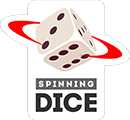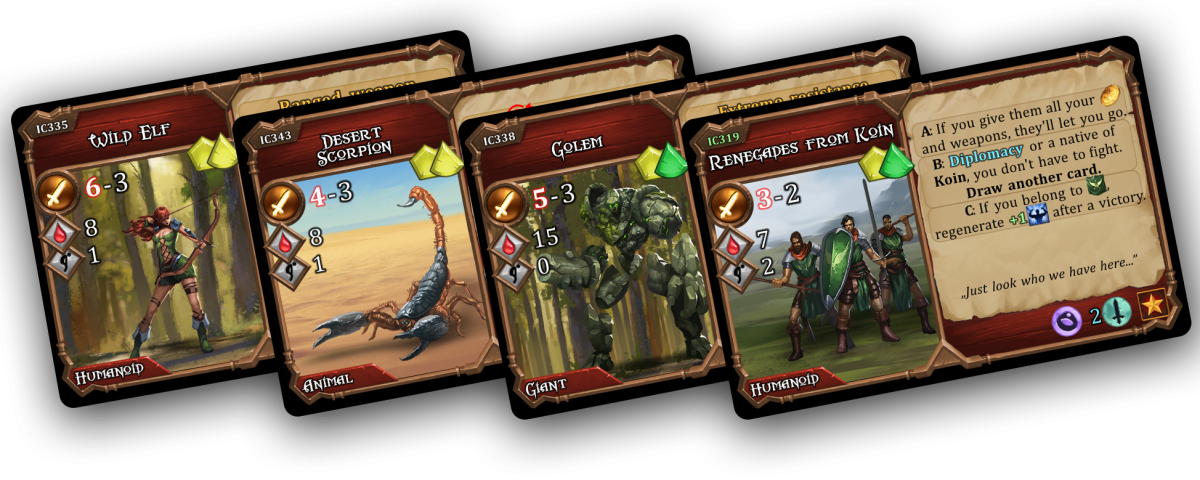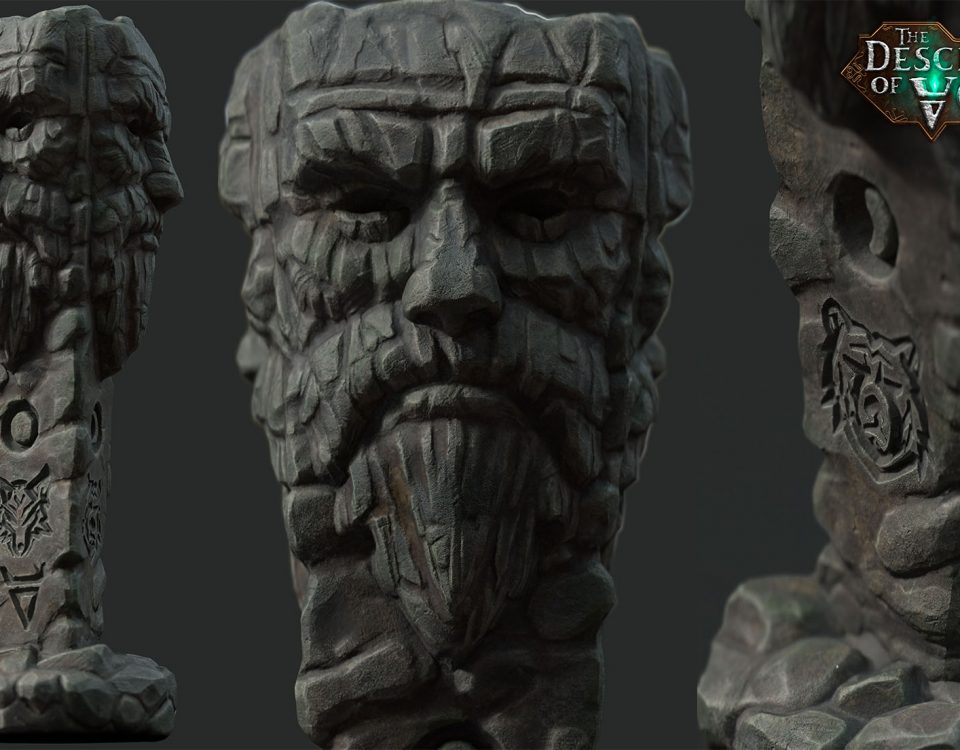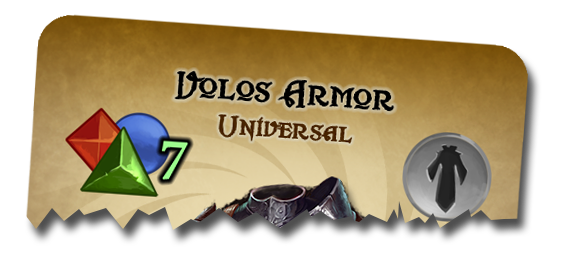Enemies and Combat

Equipment
2 September 2018
Dungeons
11 December 2018Welcome. Today we’ll reveal some details about the enemies from the adventure cards, as well as some highlights from the combat system.
But first, for those who haven’t seen the previous posts, you can find them here:
Post 1 – Game announcement
Post 2 – World map and Tutorial
Post 3 – Event cards
Post 4 – Equipment
The enemy card
Now, let’s begin with an example enemy card that you may encounter by taking a random adventure card.
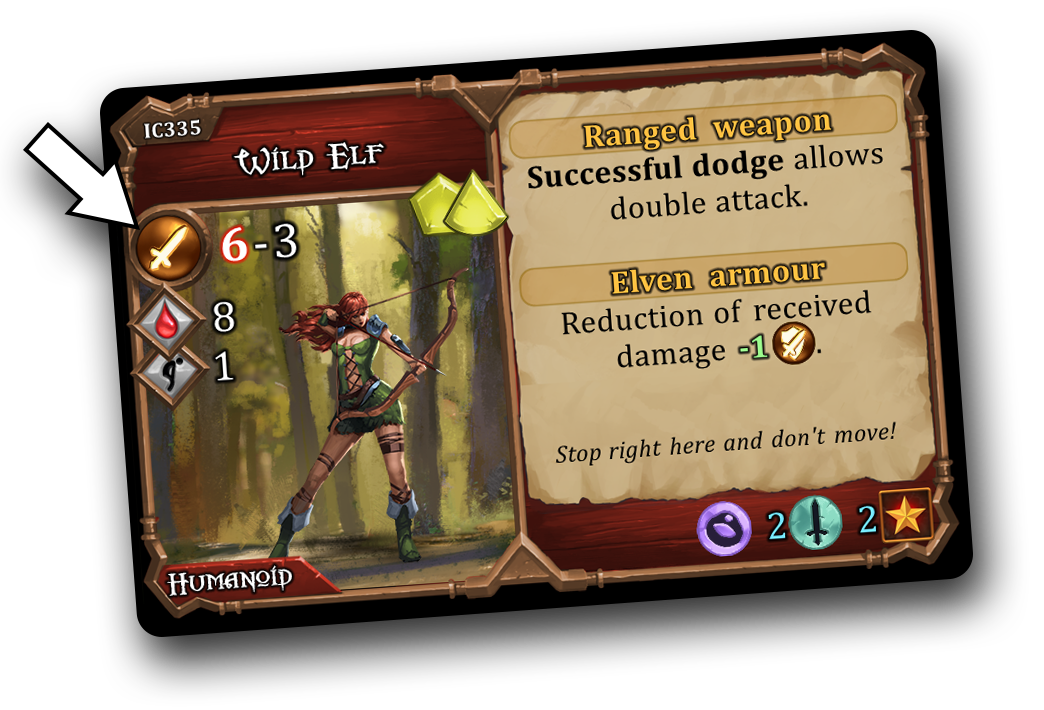
As we’ve explained in the previous post, there are 2 types of damage: physical and magical. The above enemy is dealing a physical type of damage. It has 8 health points, and it’s stamina level is 1 (in a 0-4 range, just like on the player panel). The wild elf deals 3 damage, and 6 in the case of a critical hit.
Combat
The combat is based on throwing a dice. There is a 10-sided defense dice in 3 different colors, and a 12-sided attack dice in 4 different colors.
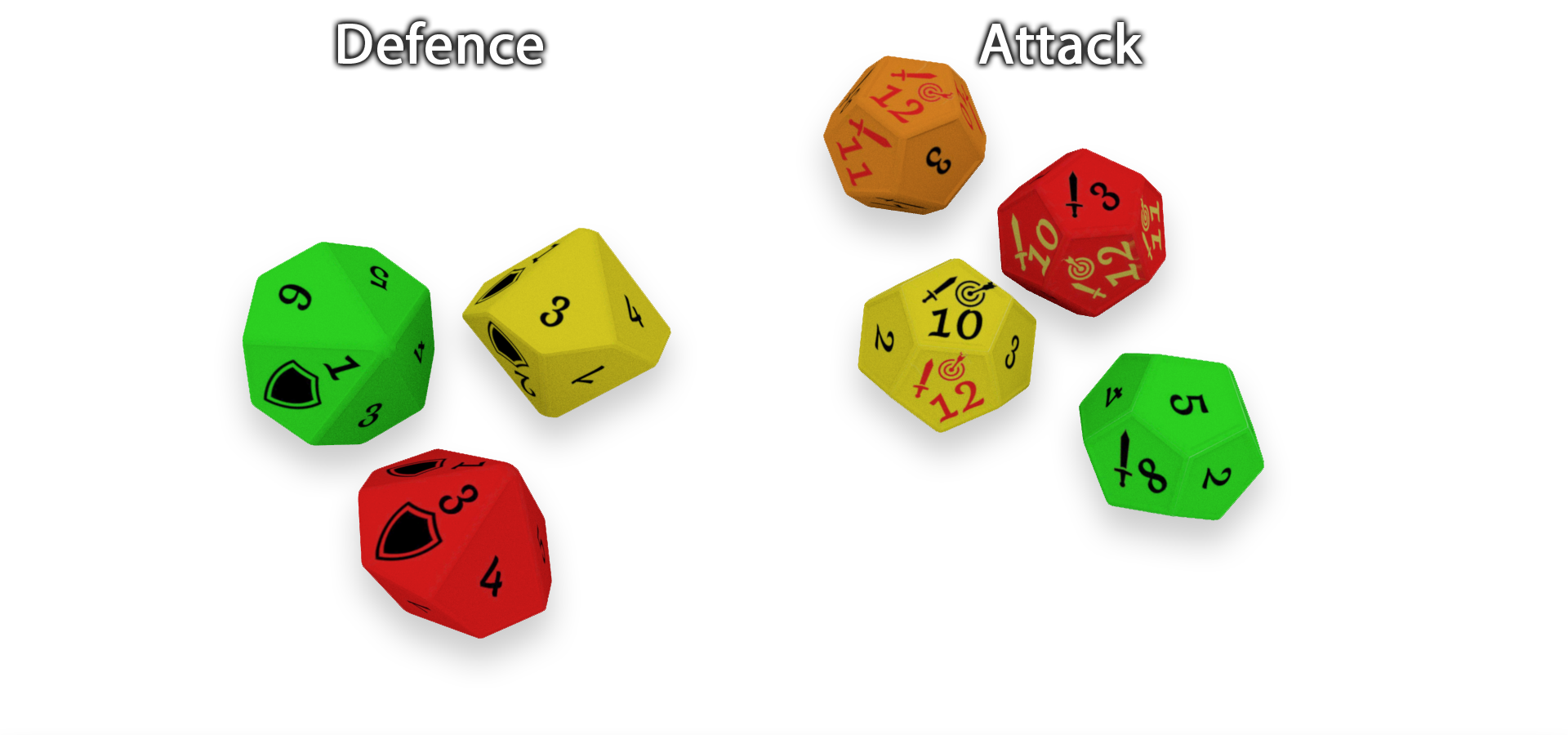
Color grades are used to determine the higher chance of successful hit, and successful defense. Our wild elf is going to use yellow defense and yellow attack dice, which makes her quite strong.
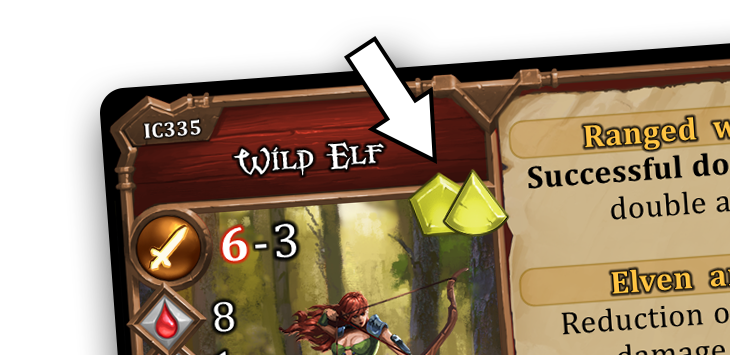
Let’s have a closer look at the attack die.
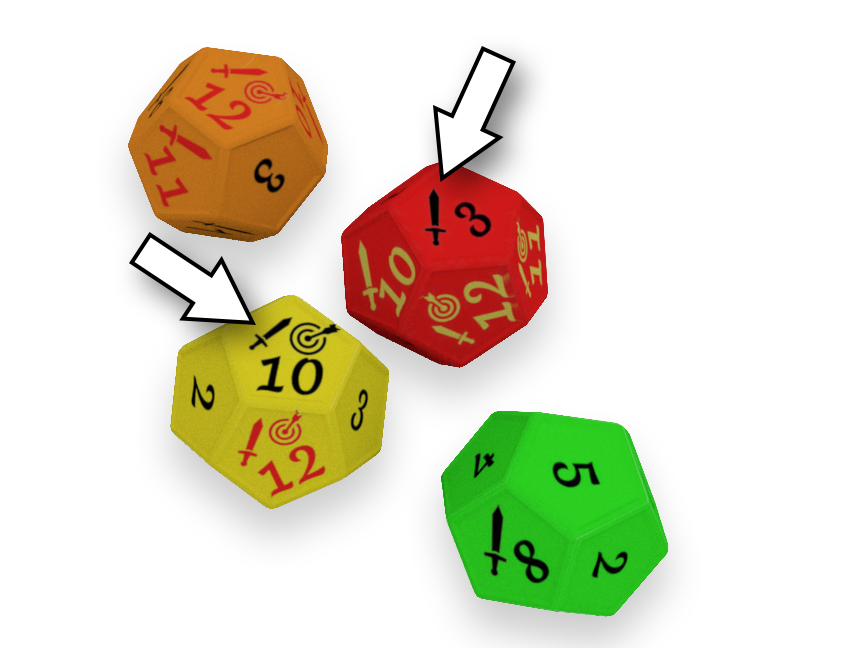
The numbers are not so important. They matter only occasionally, like for example in the case of a skill that allows you to modify the result on a die by some amount. The most important is the “sword” symbol – it means that you’ve performed a successful hit. However, that doesn’t yet mean the enemy got hurt. Now the enemy must self defend by throwing a defense die. And here is the same thing. The most important is the “shield” icon.
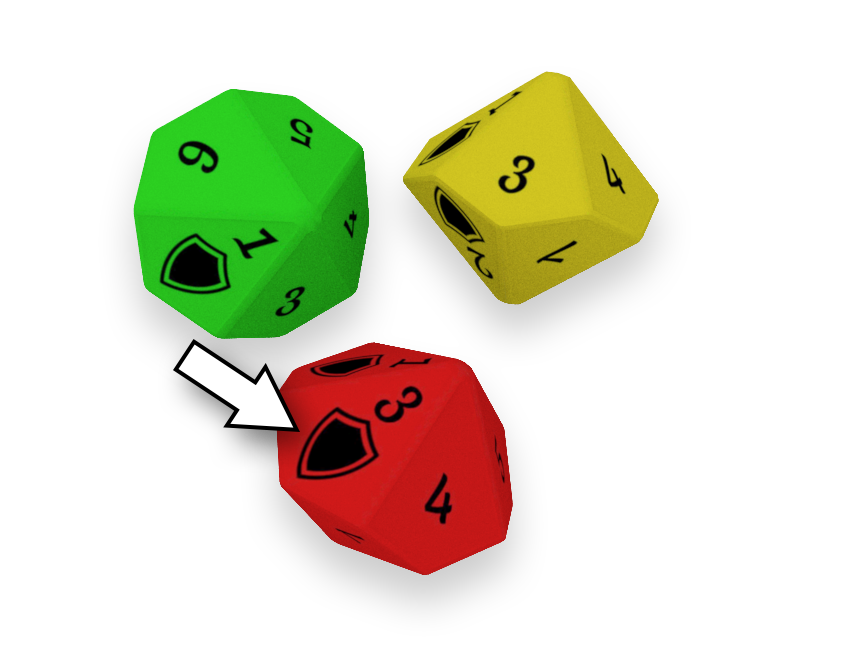
If an opponent casts a die with a “shield” icon, the defense was successful. Otherwise if the side was empty, the enemy did not defend, and will have to reduce health by as many points as your weapon is dealing.
On the attack die, some “sword” icons are red. It means the “critical hit”!
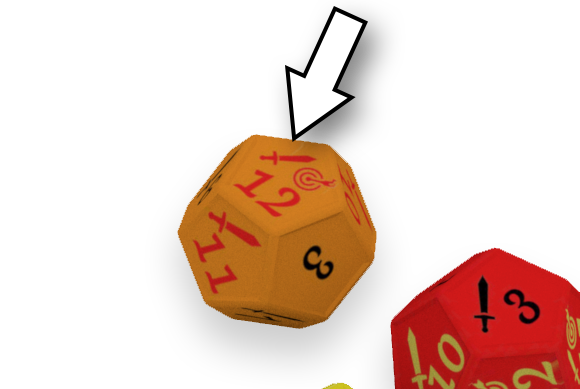
In this case, if an enemy fails to self defend, the damage will be much higher. The exact value is specified on your weapon. You can read more about the weapons in the previous post about the equipment. In our example, if the Elf throws a critical attack (that you fail to defend), she will deal 6 damage to you.
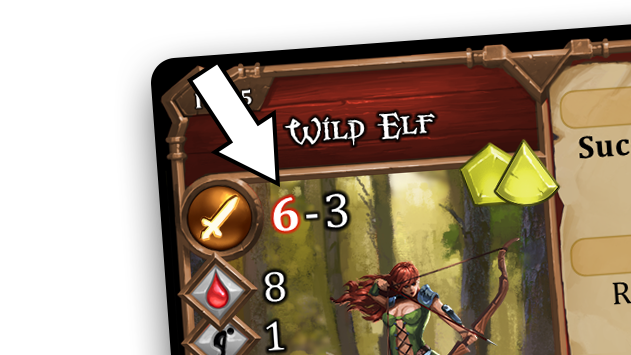
The magic
Some enemies may fight using magic.
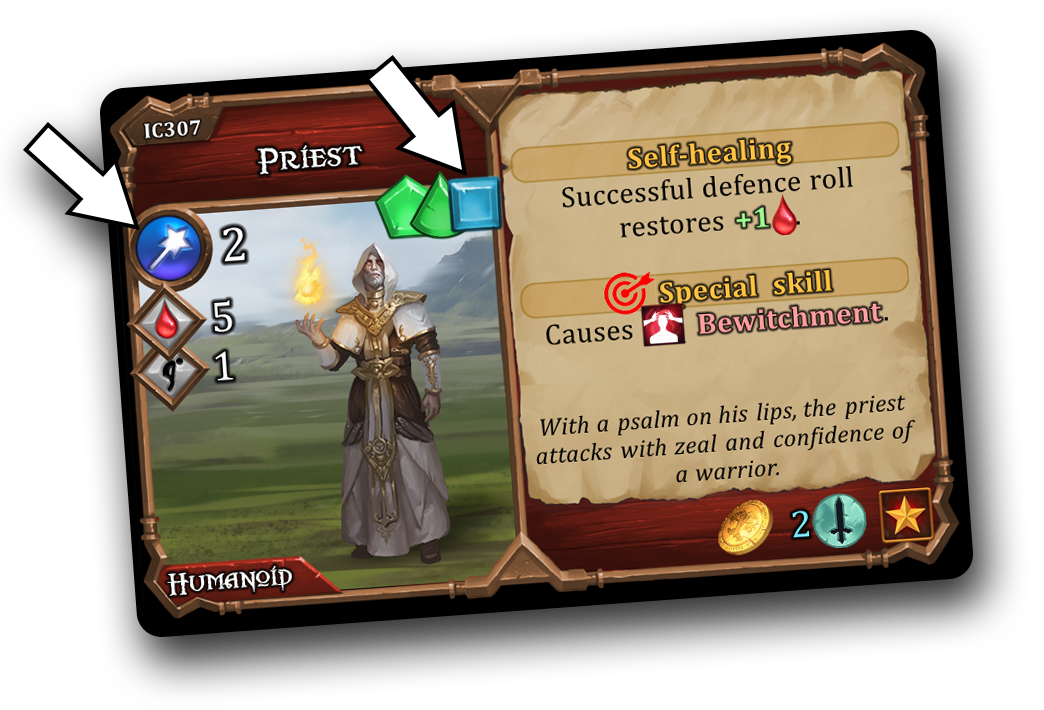
In this example, the enemy who is using magic has an additional die symbol – it’s the “Magical Penetration” dice. The rule is the same as the one that we’ve described in the previous post about the magical weapons. When such enemy throws an attack die and it’s a critical hit (the red “sword” icon), then it’s time to throw the additional die to see how much we increase the damage.
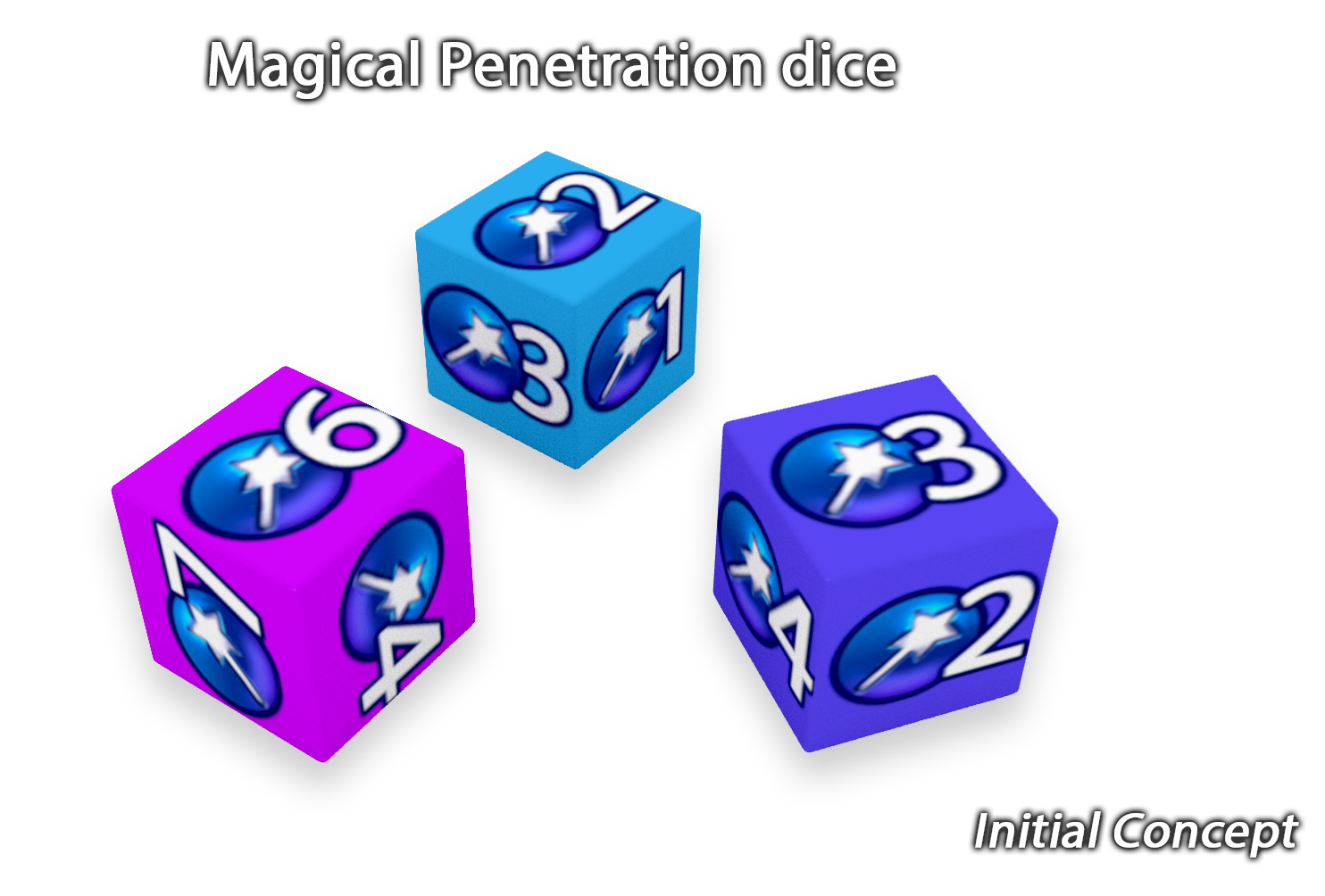
Our magical enemy is using light-blue “Magical penetration” dice. Notice, that the colors and the look of the above dice may change in the final product. So, if our magical enemy performs a successful critical hit, the total damage is the base value + the number on that light-blue die.
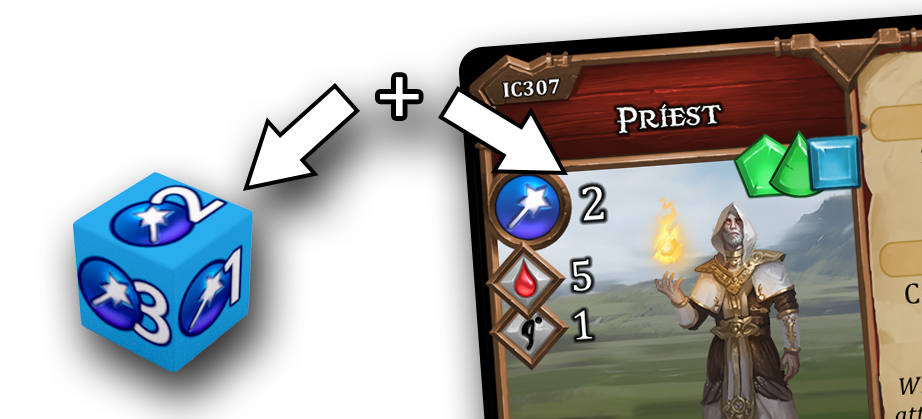
This is one of the weakest magical enemies found in the game. The high level mage enemies and players can become incredibly powerful, especially in terms of the critical hits. The purple “Magical penetration” dice can increase your critical hit even by +7! For some weapons it’s even 14 in total. The values on those penetration dice are non-linear, which means that the chance to get the highest damage is pretty low in comparison to the low damage bonus. So, playing as a mage gives you a small chance to end the combat quickly with one, maybe two hits.
Stamina
It becomes a challenge to plan your movement and your food rations, so that during your adventures you never get surprised by an enemy when being exhausted. Also, the characters are getting tired during the combat. If you are extremely exhausted, you become defenseless. It’s not only to add a difficulty to the game. It’s also to shorten the combat session. Thanks to the limited stamina, each combat is pretty short, which is appreciated by the other players when they wait for their turn.
The colour of your dice
All the enemies that you encounter have a defined dice colour. But how to tell which die you can use? It’s all determined by your attack and defense abilities.
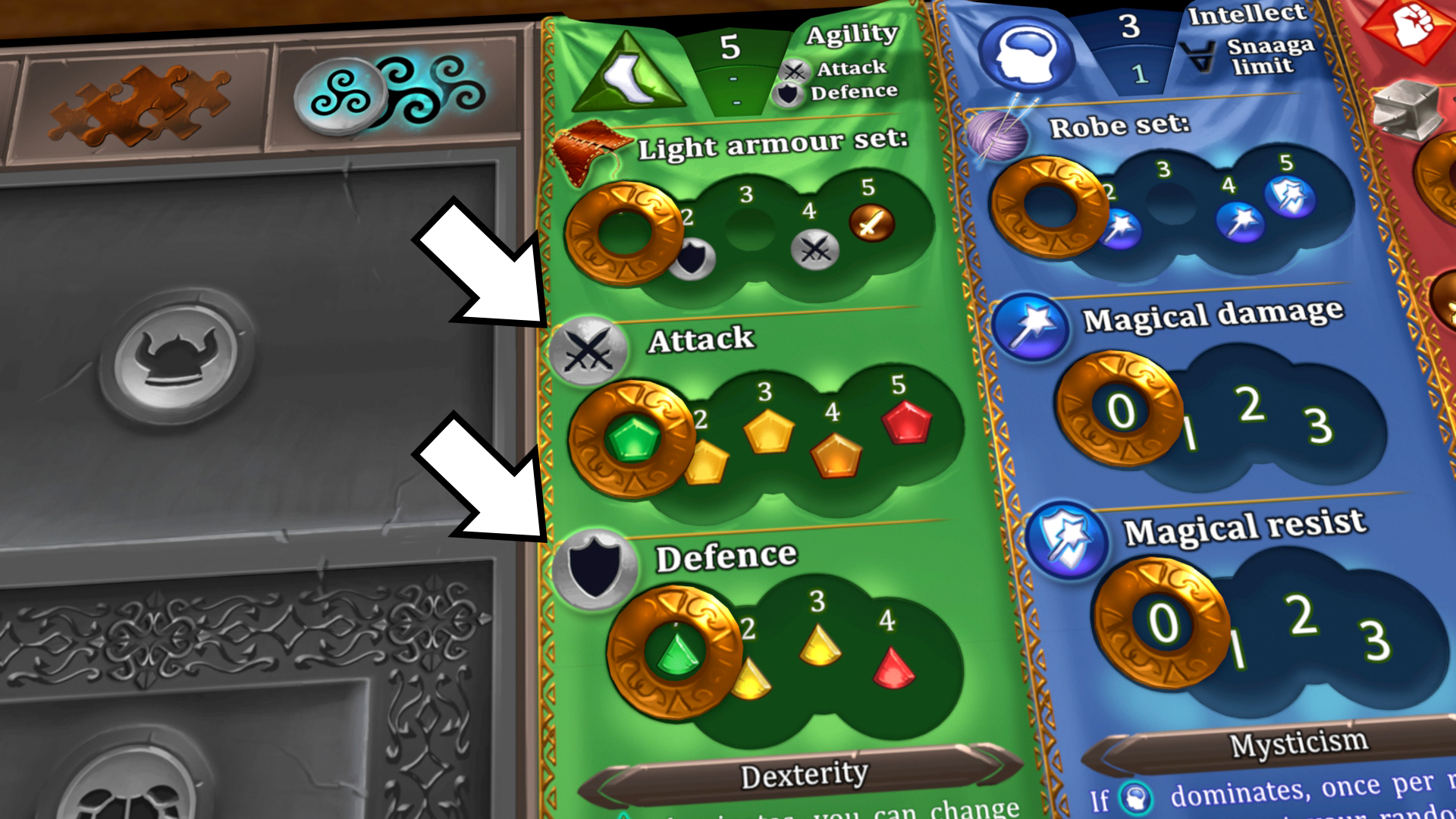
The attack and defense abilities are nothing but a score. You raise the score in a few ways. The first way is to raise your agility when leveling up.
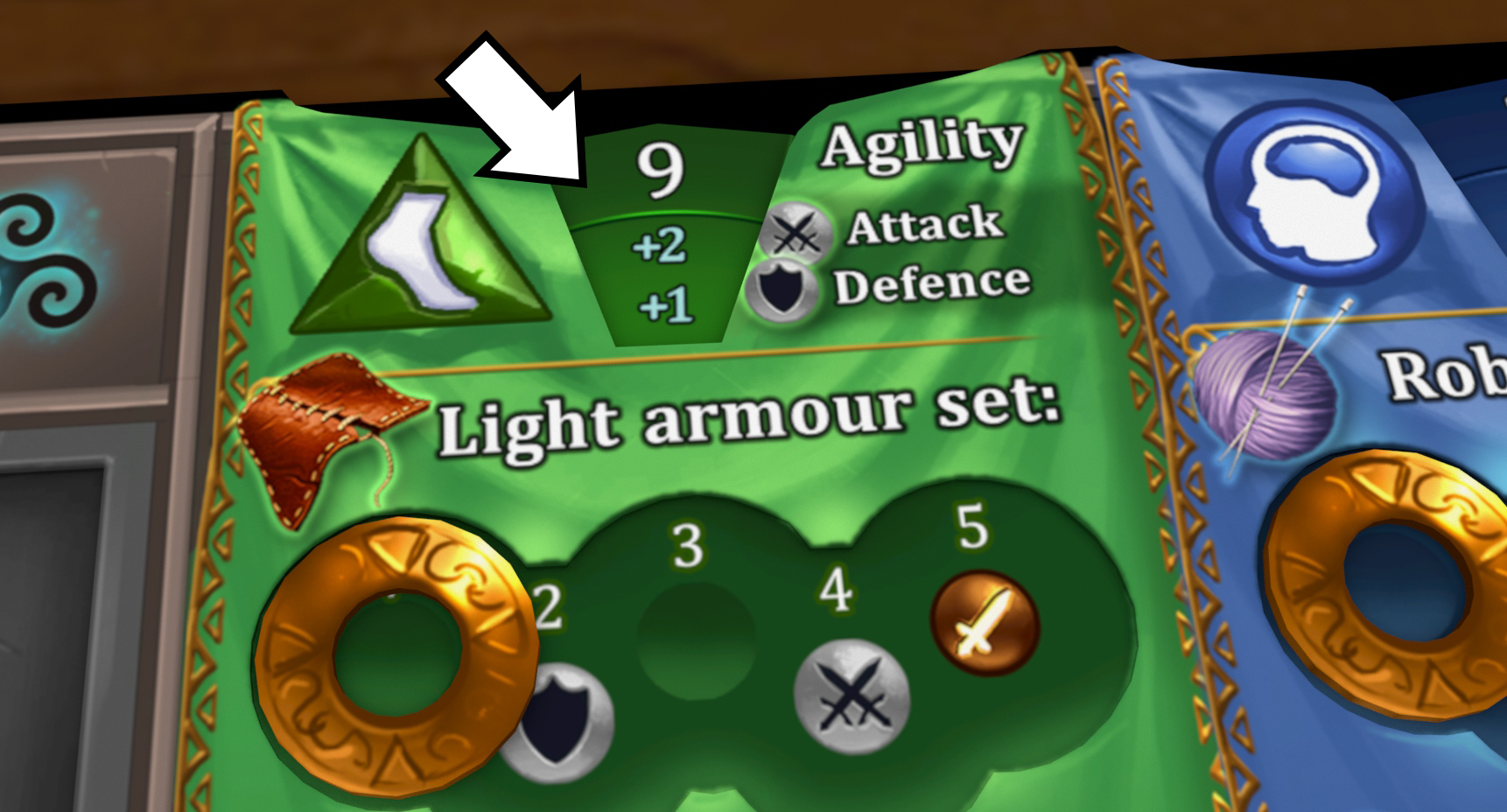
The second way is to get it from the gear.
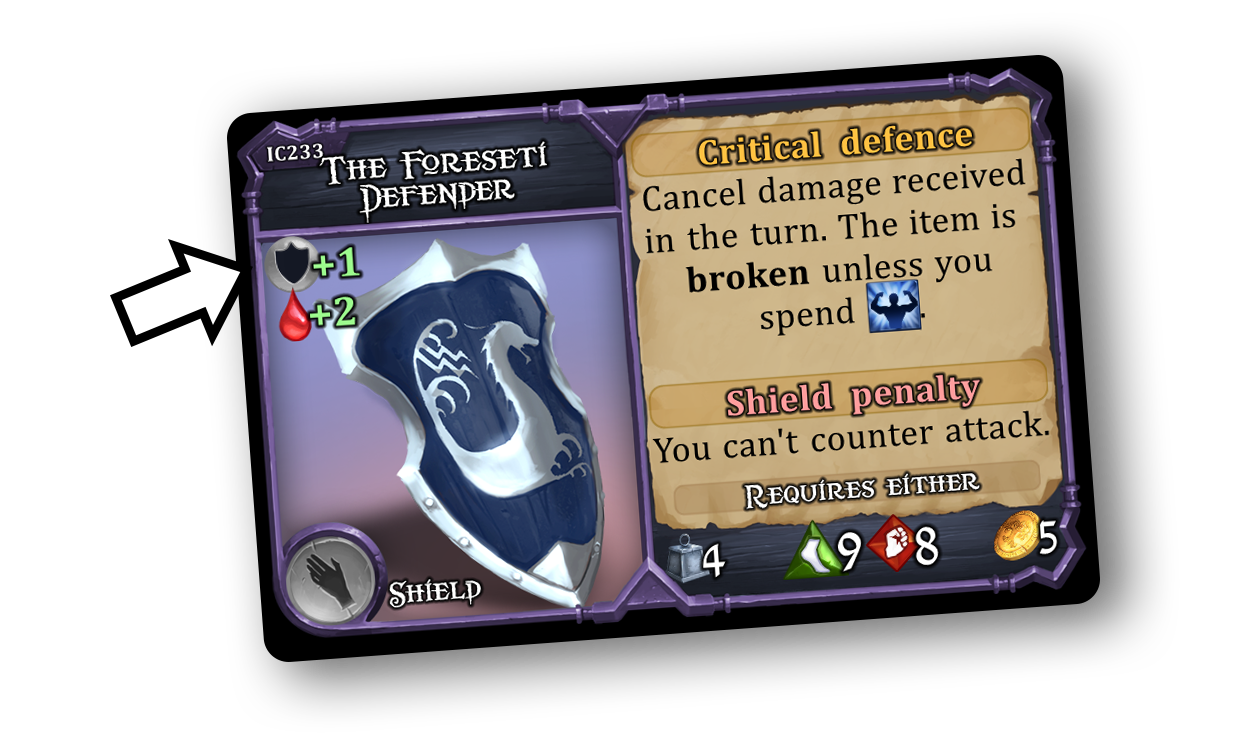
Or even as a bonus of wearing a light armour set – a couple of light armour elements of the same type.
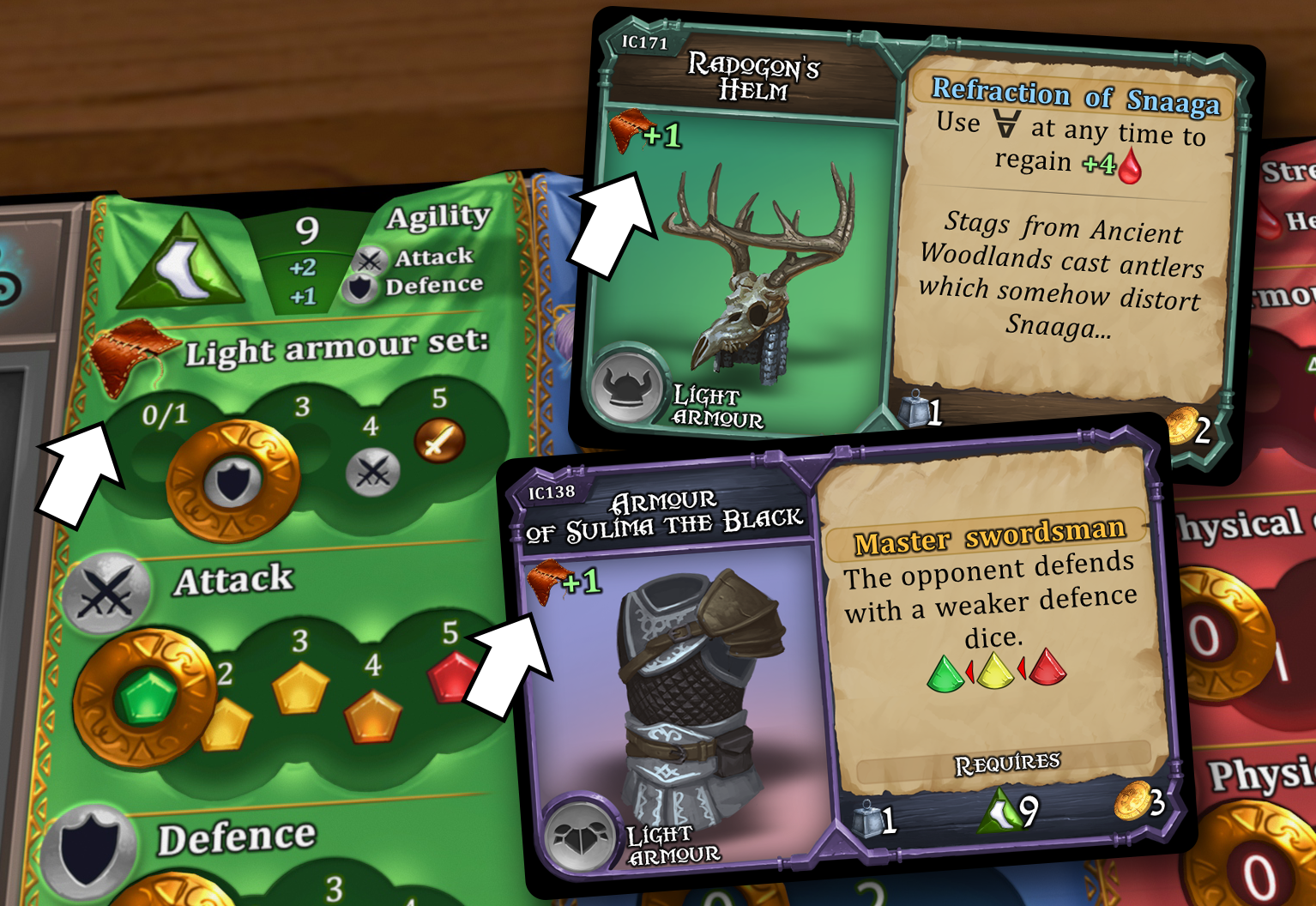
The sum of points determines the colour of your dice. As you’ve noticed, only agile characters can improve the colour of the dice. So when you play for example as a mage, you are facing a dilemma if you should increase your agility at least a little bit to get a bit better dice colour? Or is it better to max out the intellect, so you can use the most powerful magical weapons? Or maybe you should increase strength or vitality, to increase your health and survivability?
Skills
A good dice is not the only way to be powerful. After all, the result of throwing a dice is random, so you may have bad luck even with a red die. That’s why every enemy, as well as a playable character, has plenty of skills. The main difficulty of the Descendants of Volos board game, is to memorize all the skills you have, and use them at the right moment. Now, we’ll focus on some skills that can be used by the enemies, as that’s the subject of today’s post.
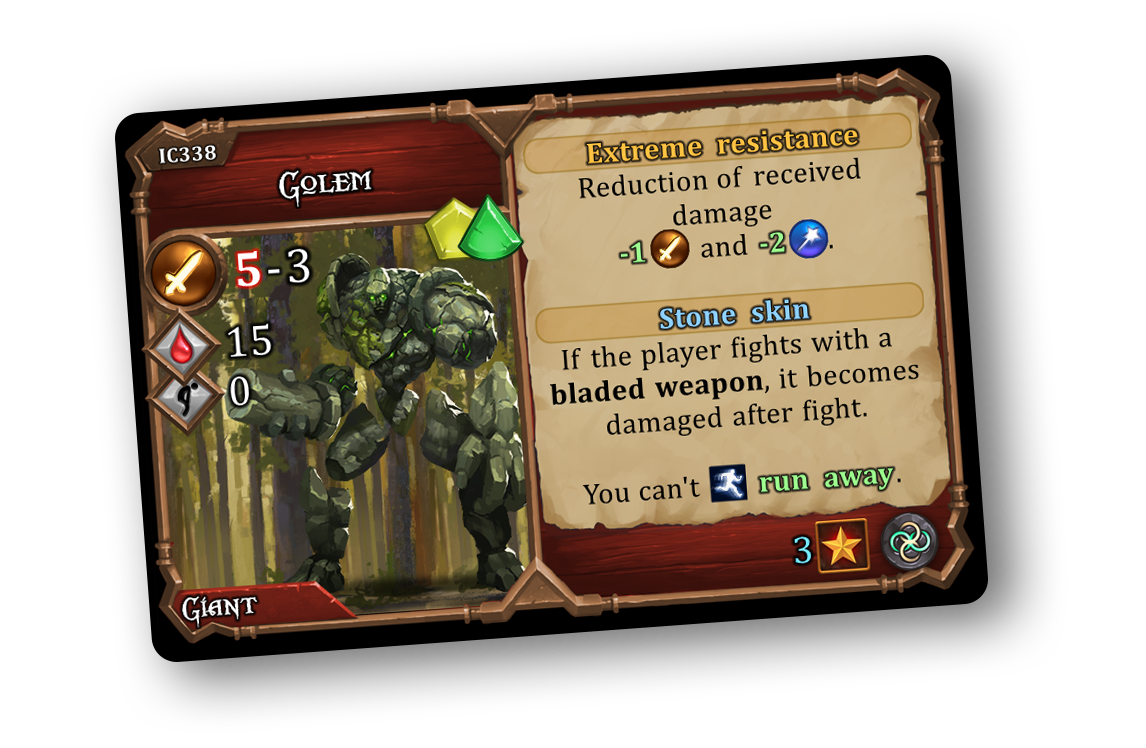
The above Golem has 2 skills. Each skills title has different colour. The orange skill title means that this skill is used during the combat. The blue title is for the skills that takes effect out of the combat. It is very useful for a player who has plenty of skills. Imagine that during the combat you are desperately looking for some useful skill. You automatically ignore all blue-titled skills as you know they can’t be used during the combat. Quite handy. Although in the case of the above Golem it all looks clear and simple with only two skills, we anyway keep the coloring for consistency.
So, the first skill is a passive one that makes your damage weaker. The second skill is applied after the combat. If you win, and if you fought with a blade, it becomes damaged, and you can’t use your weapon until you repair it. After all, the golem was made of stone.
Another example.
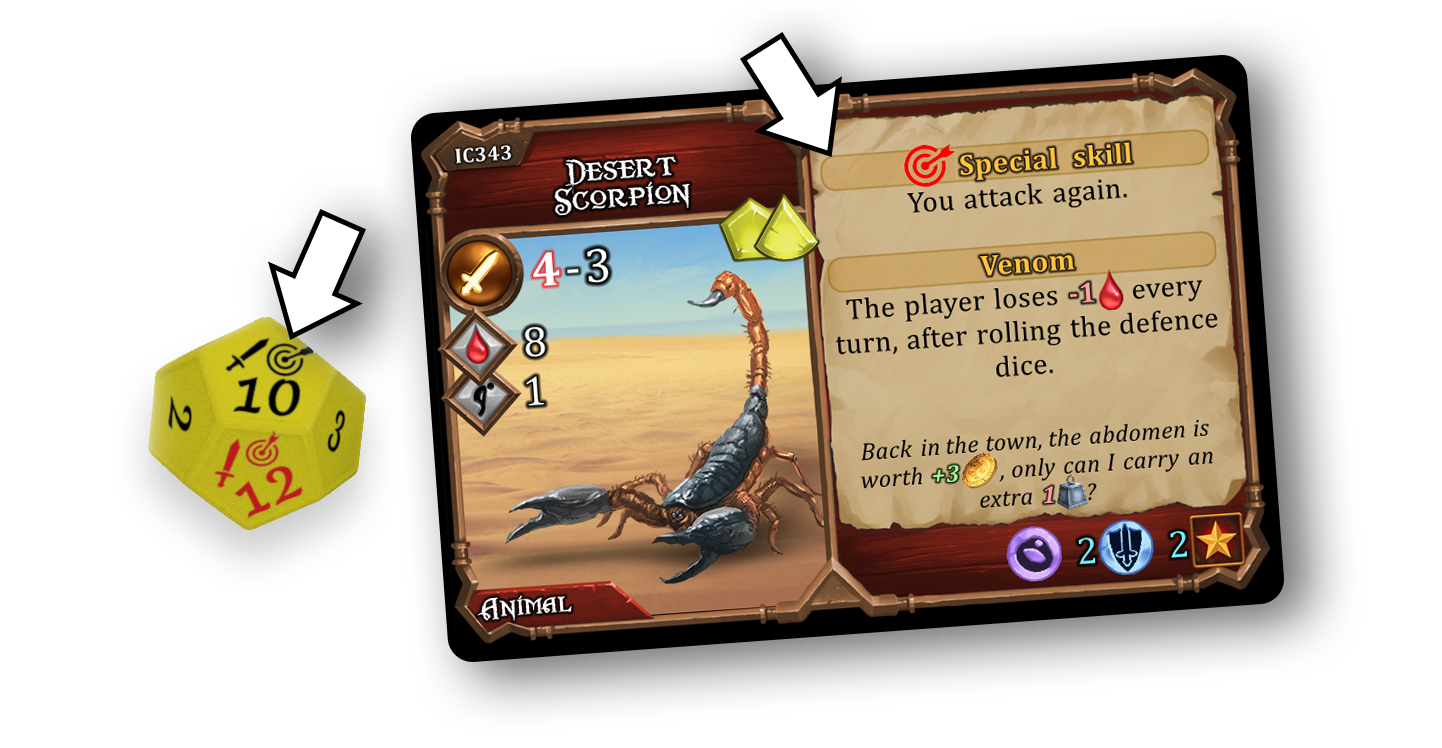
This scorpion is a badass. Although he deals low damage and uses yellow dice (not even the red ones), it’s still very deadly because of the skills. The first skill is an active one. Whenever this symbol is thrown on the attack dice, the skill is activated. In this case, the scorpion will attack again (the player loses his turn). The second skill is passive – it makes the player loose 1 health point every round. You’d better want to kill it fast.
Not all enemies have skills.
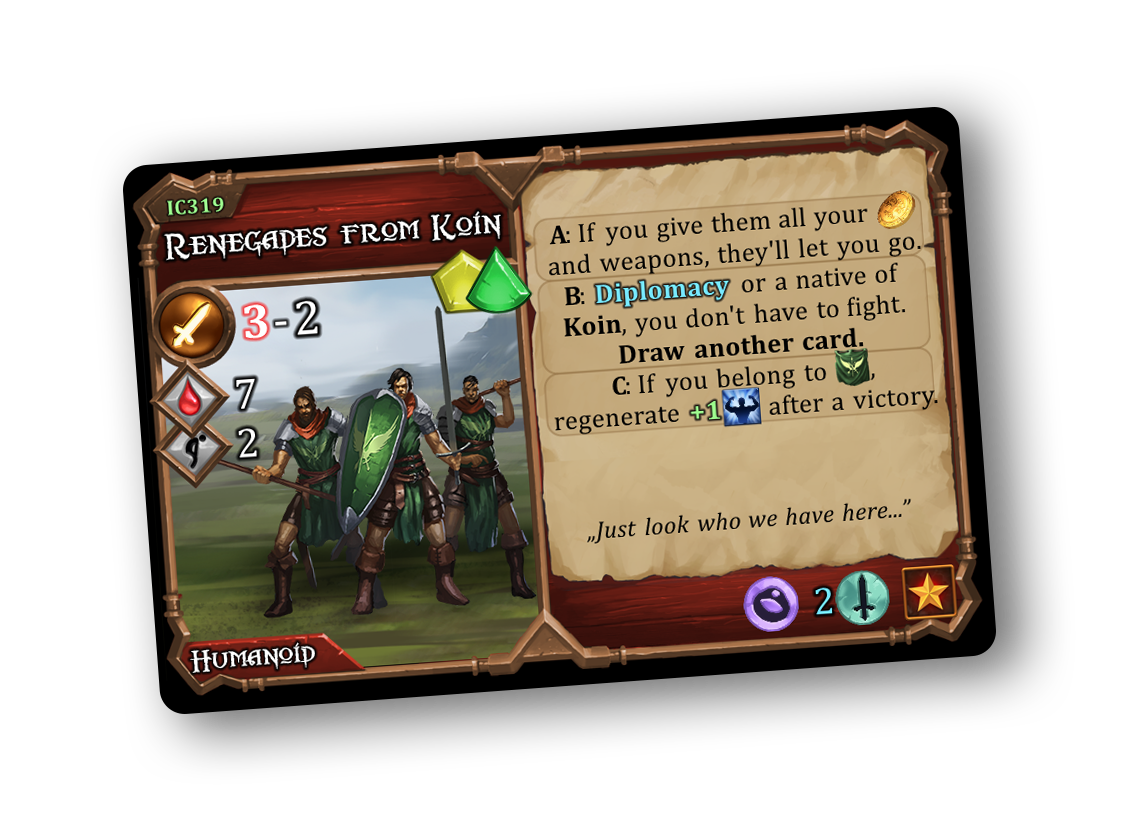
Some weaker ones, has described situation, sometimes with an option to pick, or just some flavor text. The above guys have betrayed their faction and became filthy robbers. If by any chance you don’t feel strong enough, you can avoid the fight and give them all your gold. If you are a diplomat you can convince them to let you go. Otherwise, if you win the fight and you belong to the faction they have betrayed, you’ll be able to regenerate 1 exertion point.
The rewards
The last and the most important thing in the enemy cards are the rewards.
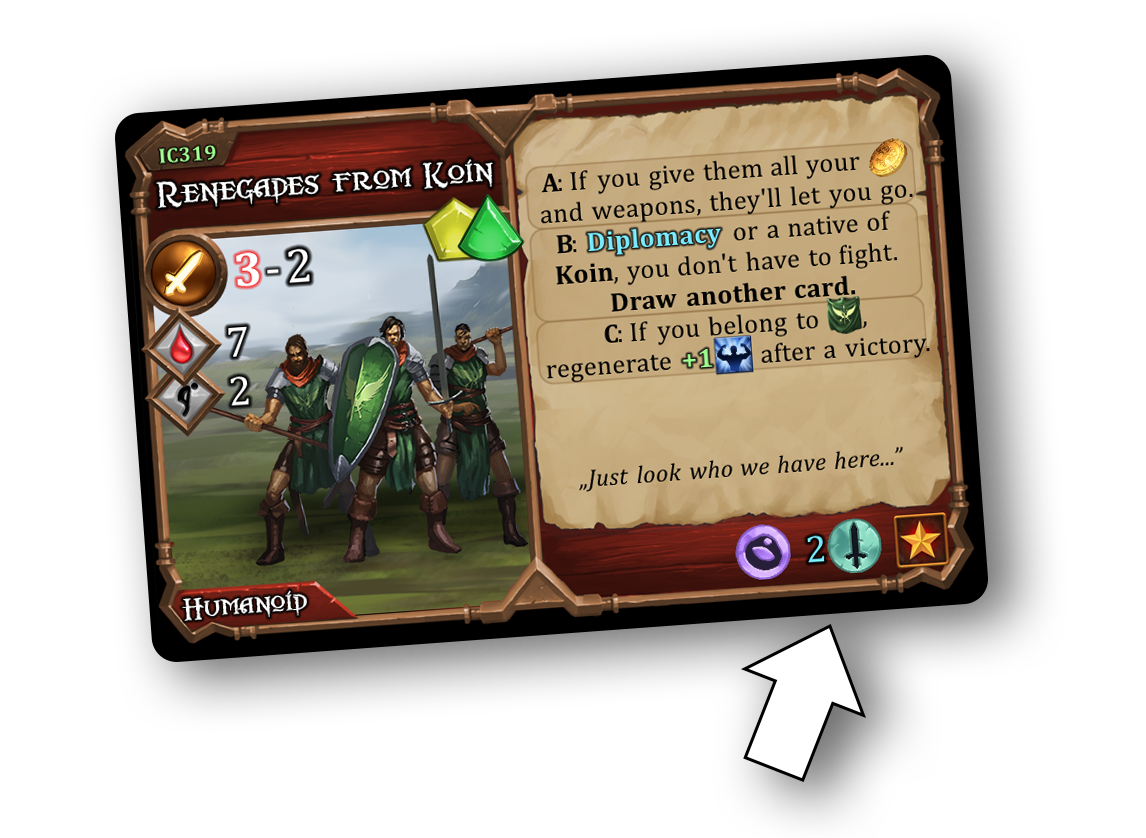
In the lower section in the corner, you can find a list of rewards you’ll get if you manage to defeat the enemy. In this example it’s: 1 random trinket, 2 random common elements of equipment, and 1 experience.
The enemies found in the adventure cards are not the only way to get into trouble. You’ll face much bigger monsters in the dungeons. But this is a subject for another time, and for another development diary post of the Descendants of Volos board game. See you soon.
